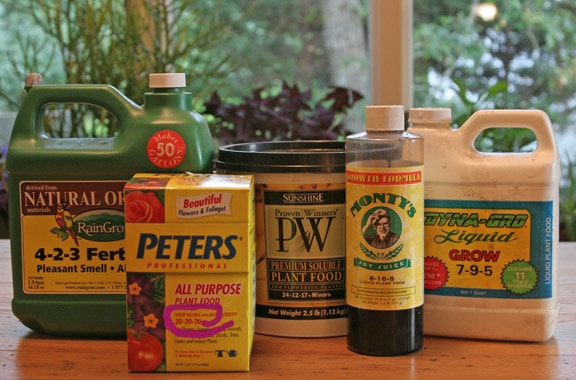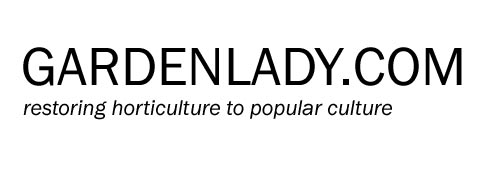
When mixing annuals in with perennials, you may have to provide supplemental fertilizer for the annuals in the bed. Although most daylilies benefit from a mid-summer feed, other perennials grow well with an application of fertilizer in the early spring. Annuals, however, often need a time-release product or several liquid feeds throughout the summer.
In this article, we’re going to look at the numbers. Not the daily lottery, but the numbers on a fertilizer package. There are three of them, and they are a little code that tells you if that particular product is right for your plants.
The numbers stand for the percentages of nitrogen, phosphorous, and potassium in the fertilizer. Plants need these nutrients in order to grow; they need others as well, but these are the “big three,” and they are always listed in the same order.
Nitrogen is the first number and nitrogen encourages leaf growth. Since the leaves fuel the plant, we want good leaf production in our lawns and gardens. But for many plants we’re not just after leaves…we also want flowers or fruit, so we look at the next two numbers.

Most fertilizer packages have the numbers prominently displayed on the front of the package. If the product also contains the minor nutrients, that is usually noted on the product’s face as well. Complete information can be found on the side or the back of the package.
The second number stands for the percentage of available phosphorous. Phosphate encourages root and flower production, so it makes sense that fertilizers made for blooming plants might have a higher middle number.
The third number stands for potassium, which is also called potash. This nutrient strengthens stem and leaf growth, and improves the overall health and disease resistance of plants.
Now what does all this mean to you, the gardener, as you stand staring at the fertilizer display? It depends on the plant you are fertilizing.
Lawn fertilizers have a high first number because we want our turf green and leafy to the max. When fertilizing evergreen plants, or indoor plants that don’t bloom, we look for even numbers straight across: 10-10-10 or 20-20-20. This is also a good formulation for summer annuals, because in many parts of the country they have such a short season that we want to pump them up just a bit. In the past, fertilizers with high middle numbers were recommended for flowering annuals, but that advice has recently changed. It turns out that many of the newer annuals are nitrogen hogs, and many fertilizer companies have adjusted their formulas so that the amount of nitrogen is slightly higher than the other nutrients.
When feeding perennials or flowering shrubs, you can also use a product with even numbers or one with a somewhat higher middle number…something like a 5-10-5.
So now you know the code: nitrogen, phosphorous, and potassium. To give your plant what it needs, remember… it’s all in the numbers.
